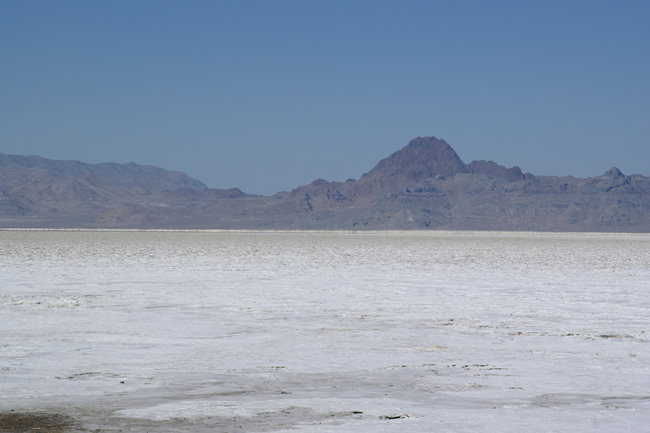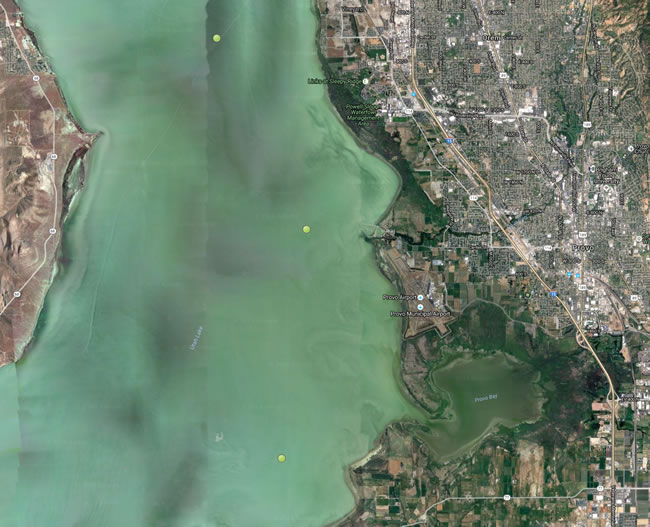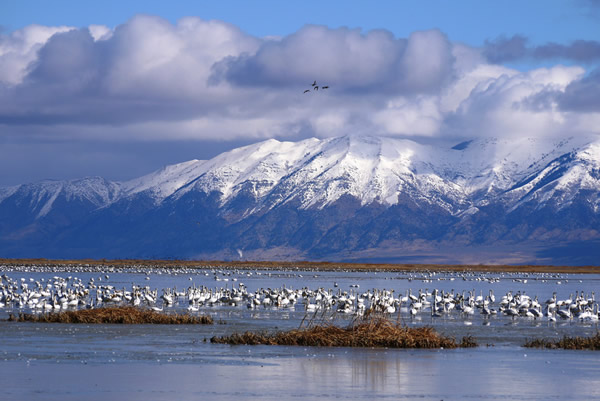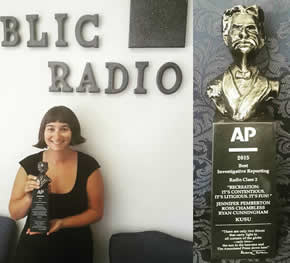News and Highlights
This is a list of past iUTAH EPSCoR news from 2012 to 2018.
September 21, 2016
Two Exciting Science Communication Events
iUTAH is collaborating with Utah State University’s Office of Research and Graduate Studies and the Vice President of Research office at University of Utah to bring members of the Alan Alda Center for Communicating Science to Utah on October 3 and 5 for two interactive community plenary sessions.
The session’s goals are to train researchers from all disciplines to more effectively communicate scientific concepts to public audiences. The Alan Alda Center for Communicating Science, part of the Stony Brook University in New York, believes that “scientists have a responsibility to share the meaning and implications of their work” and that “an engaged public encourages sound public decision-making.”
Alexa Sand, an executive member of USU’s Office of Research & Graduate Studies said this vision is what drove the USU to get involved in the event. “We jumped on the opportunity to collaborate on bringing the Alda Center to campus,” Sand said. “They are doing amazing things for scientists seeking to communicate complex ideas to a broad public. This workshop offers a valuable opportunity for researchers to develop and hone their skills.”
The interactive plenary sessions will take place on Monday, October 3, at 8:30 am, Eccles Conference Center Auditorium on the USU’s Logan campus, and Wednesday, October 5, at 8:30 am, at the University Guest House, Officer’s Club, in Salt Lake City, UT.
Each plenary session will create a venue for attendees to practice research communication in interactive and improvised settings. The session is open to the community and may be attended free of charge.

September 19, 2016
Algae Events Should Help Utah's Water Awareness Bloom

Michelle Baker, iUTAH Project Director and Principal Investigator, and a professor of biology at Utah State University, recently published an op-ed piece in the Salt Lake Tribune. In it, she discusses iUTAH’s involvement with the national education effort called ‘Imagine a Day without Water.’ She starts by saying that "Recent headlines in newspapers across the Wasatch Front have featured expanded coverage of local harmful algal blooms (HABs) affecting the lives and livelihoods of Utah's residents. As communities brace for further challenges in light of climate change, population growth and aging infrastructure, people are beginning to ask questions about the complex nature of Utah's water system.
Our water and wastewater infrastructure lies underground, out of sight and out of mind. But this critical infrastructure works 24 hours a day, seven days a week, 365 days per year, to bring clean, safe water to us. It also takes away what flows down our drains and toilets so that the water can be treated before it is released back into the environment…”
September 14, 2016
Scientists Try To Solve The Puzzle Of The Shrinking Salt Flats Crust
iUTAH researcher Brenda Bowen, a University of Utah geoscientist, talked with reporter Judy Fahys on KUER radio about the research her team is doing to help solve the mystery of the shrinking crust at the Bonneville Salt Flats. The story says that research led by Bowen “is logging where the Lake Bonneville floor ends and where the layers of clay, gypsum and salt begin. Other data, like oxygen levels, is important too. The study is even looking at microbacteria. The researchers are exploring the reasons the salt crust is shrinking in breadth and depth.”
“We can look at that level of impact of what we’re doing,” says Bowen, “but we can also understand how is that relative to the scale of geologic change, of natural change, and ecological evolution even beyond what humans are doing.” Research, including data collection, on the salt flats is funded by a $1.5 million dollar grant from the National Science Foundation.

Photo credit: Hermann Luyken (Own work) [CC0], via Wikimedia Commons
September 8, 2016
Updates on the Algae Bloom in Utah Lake
Recent headlines in newspapers across the Wasatch front have featured expanded coverage of local algal blooms affecting the lives and livelihoods of Utah’s residents. As communities brace for further challenges in light of climate change, population growth, and aging infrastructure, people are beginning to ask questions about the complex nature of Utah’s water system.
The Salt Lake Tribune published a comprehensive three-part story this past week on the continuing struggles that Utah faces with harmful algal blooms (HABs), entitled “Waste Water?” The article examines many of the complications associated with July’s massive bloom of toxic algae in Utah Lake. In the article, Emma Penrod explores the causes, concerns and costs, both economic and environmental, of addressing the long-term effects caused by HABs to Utah’s waterways along the Wasatch front.
iUTAH’s Erin Jones, PhD student at Brigham Young University, and GAMUT technicians Dave Eiriksson and Dylan Dastrup helped deploy the new algae-tracking sensors in Utah Lake, installed on Monday August 29. These water quality data buoys send data every 60 minutes. This up-to-date information is monitored at the Utah Lake HAB Network and is available at the Utah Division of Water Quality (UDWQ) website. UDWQ states on their website that “these sites in time will be used in conjunction with a model that will be used to forecast for potential HABs.”
“I am excited that attention has been drawn to the issue and hopefully the best possible science and management can come together to find and reach a realistic, improved future for Utah Lake,” says Jones, who is also a Provo native. She adds that she “learned the virtues of Great Salt Lake after finally going out to do research on HABs in Farmington Bay several years ago, but still held the prejudices against Utah Lake that being a local had ingrained in me.” She likes to tell people that "if you think the lake is trash, it's because we've treated it like trash."
With many specialists in the field ranging from biologists to social scientists and engineers, iUTAH is doing what it can to support and help the state and municipal agencies addressing these issues. iUTAH, a National Science Foundation funded project, is an interdisciplinary research and training program aimed at strengthening science for Utah’s water future.
Press: Salt Lake Tribune

September 6, 2016
A New Tool For Wetland Management
Utah State University researchers, including iUTAH researcher David Rosenberg, a professor in civil and environmental engineering, were recently featured in the news for contributions on the development of a model to improve arid-region wetlands.
The study was published in Water Resources Research on Sept. 1. Rosenberg, along with Omar Alminagorta, a former postdoctoral associate at the Utah Water Research Lab and USU Associate Professor Karin M. Kettenring, a wetland ecologist, co-authored the study. Findings show that if refuge managers implement the model's recommendations, they could nearly double the area of productive wetland habitat using existing resources." We found that more dynamically altering the water levels in wetland units at the refuge improves habitat for migratory birds," said Rosenberg.
In an excerpt from the EurekaAlert article “Rosenberg adds that adjusting water levels within wetland units more frequently also better corresponds to historical hydrologic conditions. The model also suggests focusing efforts to control invasive vegetation - particularly for phragmites, a widespread invasive grass - in late summer rather than early fall. These two changes, he explains, could significantly increase the habitat area for priority migratory bird species that use the refuge. ‘The model shows us how to better use scarce water, labor and financial resources to achieve the goals set by the refuge managers each year,’ said Rosenberg.”
Press: USU Today | EurekaAlert | ScienceDaily | Natural Science News | Utah Public Radio

Photo credit: Chris Luecke.
August 23, 2016
Reporters from UPR's The Source program win awards
Utah Public Radio’s The Source was recognized with awards from the Associated Press Radio-Television Association (APTRA), and the Society of Professional Journalists, Utah Headliners Chapter in 2016. The program’s production team, made up of Jennifer Pemberton, Ross Chambless, and Ryan Cunningham, were recognized for:
- 2015 Best Investigative Reporting from the Associated Press Television and Radio Association for the episode "Recreation: It's Contentious. It's Litigious. It's Fun!"
- 2nd Place for Radio Series in the 2016 Utah Journalism Awards from the Society of Professional Journalists, Utah Headliners Chapter.
UPR was the only radio station from Utah to win an APTRA award. For a complete list of winners visit the APTRA website.
The Source, an hour-long monthly program produced by Utah Public Radio (UPR), has tracked water news across Utah. Monthly editions, which were supported by iUTAH, followed scientists, and others, into the lakes, streams, and snowfields that are the source of our drinking water, our agricultural industry, our stunning scenery, and our world-class recreation. Utah Public Radio is interested in partnering with groups from across the state to help educate the public through storytelling or underwriting. Past episodes of The Source are available at either the UPR or the iUTAH website.


Photos courtesy of J. Pemberton


